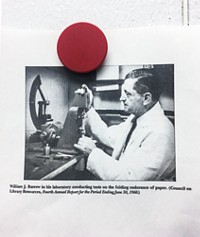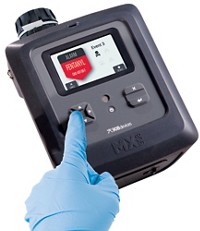Advertisement
Grab your lab coat. Let's get started
Welcome!
Welcome!
Create an account below to get 6 C&EN articles per month, receive newsletters and more - all free.
It seems this is your first time logging in online. Please enter the following information to continue.
As an ACS member you automatically get access to this site. All we need is few more details to create your reading experience.
Not you? Sign in with a different account.
Not you? Sign in with a different account.
ERROR 1
ERROR 1
ERROR 2
ERROR 2
ERROR 2
ERROR 2
ERROR 2
Password and Confirm password must match.
If you have an ACS member number, please enter it here so we can link this account to your membership. (optional)
ERROR 2
ACS values your privacy. By submitting your information, you are gaining access to C&EN and subscribing to our weekly newsletter. We use the information you provide to make your reading experience better, and we will never sell your data to third party members.
Analytical Chemistry
Testing Old Tapes For Playability
Analytical Chemistry: Noninvasive infrared spectroscopy could help archivists prioritize tape recordings for digitization
by Katharine Gammon
September 8, 2015

Audio recordings are a huge part of the world’s cultural history—and some are in danger of degrading so much that they’ll be lost forever. Now researchers report that infrared spectroscopy offers a quick, noninvasive way to separate magnetic tapes that can still be played from those that can’t. This could help archivists know which tapes need special handling, and soon, before they get any worse. (Anal. Chem. 2015, DOI: 10.1021/acs.analchem.5b01810).
The Cultural Heritage Index estimates that there are 46 million magnetic tapes (VHS, cassette, and others) in museums and archives in the U.S. alone—and about 40% of them are of unknown quality. Many of these tapes are reaching the end of their playable lifetime, and given the limited number of studio-quality tape players available for the digitizing process, not all the tapes will be digitized before the world loses them.
The sound information on tapes is encoded in magnetic particles, commonly disbursed within a polyester-urethane binder. Exposed to heat and humidity, the ester groups react with water to form a carboxylic acid and alcohol, making the tapes sticky. Eventually the tapes start to shed pieces of polyester-urethane, which can stick to the heads of the tape player, damaging both the tape and the machine. The only remedy currently is to bake the tapes at a low temperature, which sometimes makes them playable for a short time—long enough to digitize them.
“You might ask why not automatically bake the tapes, but no one has enough time,” explains Stephen L. Morgan, a chemist at the University of South Carolina and coauthor of the new work. “Our goal was to develop an easy, noninvasive method to identify the tapes that are in the most danger, so that they can be prioritized for digitization.”
In the new work, Morgan, Eric M. Breitung of the Library of Congress, and collaborators first randomly selected 133 quarter-inch audio tapes from a Library of Congress collection acquired in the 1970s, 1980s and 1990s. They then used attenuated total-reflection Fourier transform infrared spectroscopy to analyze small sections of the tapes. They found that the presence of spectral peaks characteristic of polyester-urethane degradation products, among others, could be used to identify the tapes that were nonplayable—which the researchers confirmed by observing them on a headless reel-to-reel tape player—with 92% accuracy. These would be candidates for baking and prompt digitization.
The researchers have embedded their statistical model and methodology in user-friendly software to make the process easy for conservators, who often don’t have a background in analytical chemistry, Morgan says. They’ve written software that will let conservators train the program to their particular tape collection, because different brands and ages of tapes have slightly different tape chemistry.
George Blood, an audio and video preservationist in Philadelphia who was not involved with the work, said that he would welcome a tool to prioritize recordings—but others in his field may be harder to convince. “I think the technique has a high potential, but there’s not a cultural history within the preservation trade of people using this level of scientific discovery,” he says. If the tool could be made to be cheap and easy enough to use, he thinks it could be accepted.
But there’s a lot recorded on tape that’s in danger of being lost, Blood says. “It’s definitely a race against time, and in around 20 years we won’t be able to play back anything,” he says. “Anything that expedites the process will have a significant impact on the volume of the cultural record that does get digitized.”





Join the conversation
Contact the reporter
Submit a Letter to the Editor for publication
Engage with us on Twitter